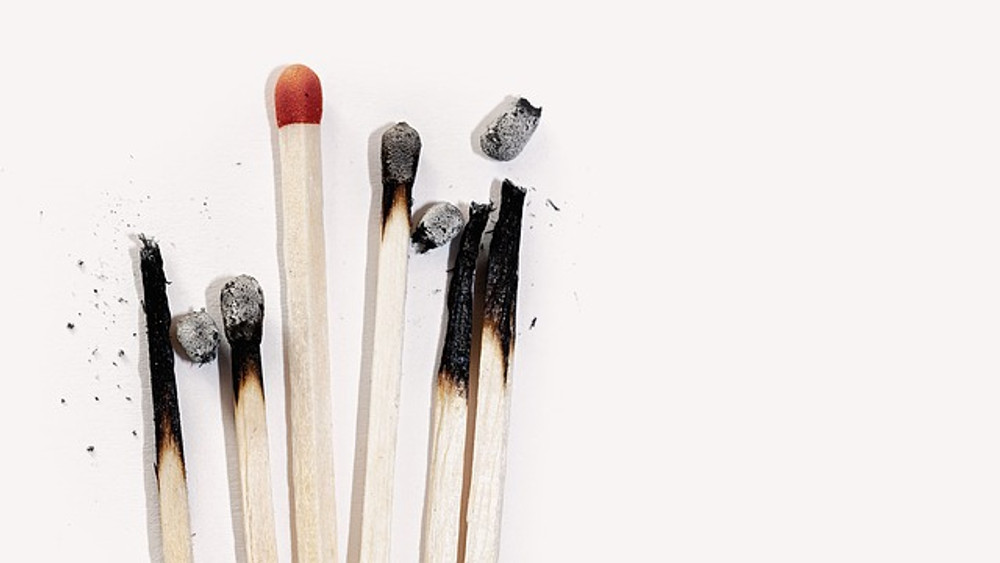Burnout is when you feel like you have hit the wall, exhaustion-wise. But then you must climb the wall and keep going. There is no catharsis or lasting rest. All that you feel is a background hum of exhaustion. Anne Helen Peterson
What is burnout? Herbert Freudenberger’s 1975 original definition included three components. 1) Emotional exhaustion (fatigue from holding on to too many things, feeling bone tired), 2) Depersonalization, (depletion in empathy, caring and compassion, pouring out of an empty cup) and 3) A decreased sense of accomplishment (feeling that nothing really matters). Research has shown that emotional exhaustion’s first component is what can have a significant negative effect on relationships and function, especially in women. Research has shown that high levels of burnout are common in the teaching and healthcare professions. While most research is focused on occupational burnout, there has been increasing research into parental burnout.
It is not your fault that you are exhausted. Many times, we find ourselves in situations that cannot be changed. We are constantly bombarded with horrifying images from news events. There are many things we have to deal with, such as raising children or caring for parents. You might come across racism, sexism or homophobia. Half of the population, mainly women is now made up of givers. They believe they have a moral duty to give. It’s not giving that is the problem, it’s giving in a system where you feel entitled to take everything you have and make you feel like you can’t refuse. All of this is enough to make us feel exhausted. We could not be more exhausted.
Burnout is not something that happens overnight. Burnout is a gradual process, and symptoms may appear subtle at first. It is important to recognize the signs and avoid long-term problems. Burnout can lead to fatigue, frequent illness, headaches, muscle pain, changes in eating habits, or other physical symptoms. Emotional signs include a loss of motivation, cynicism, and a negative outlook (everyday it is a bad one), feeling defeated, stuck, and/or trapped (nothing I do will make a difference). Burnout behavior signs include skipping work, leaving early or arriving late, taking out frustrations on others, procrastination and isolating oneself from others.
Stress/Depression vs. Burnout. You may have noticed that some of these symptoms are similar to depression and stress, but there is a significant difference. Unrelenting stress can cause burnout, but not the same thing as excessive stress. Over-engagement is a sign of stress, and burnout is a sign that you are disengaged. Stress is too much. It involves too many demands on your physical and mental health. Stressed people may believe that if everything is under control they will feel better. Stress can be characterized by intense emotions, hyperactivity and a sense if urgency.
On the other hand, burnout is not about enough. Burnout is feeling depleted, empty, mentally exhausted, without motivation and without caring. Many people who experience burnout don’t believe there is any chance of positive change. Burnout can be described as feeling like you are drowning in responsibilities. Although you may be aware that you are under excessive stress, it is not common to notice it. It can also be subtle.
Untreated burnout can lead to depression. While unmanaged stress can often lead to anxiety disorders, untreated stress can cause depression. Both depression and burnout can have similar symptoms. Burnout symptoms can overlap with depression. However, the key difference is that they usually disappear once the stressor is over and the cycle of stress is completed. While depression can have a specific cause, burnout may be due to a more generalized condition. Sometimes, a single event can trigger depression. However, your depression could continue even after the stress has passed. There are many treatment options for depressive disorders. They are well-studied. Burnout, on the other hand is a condition and not a diagnosis. There are still many interventions. Untreated burnout can lead to anxiety and depression, as well as other health conditions like heart disease, diabetes, or sleep disorders.
Burnout is caused by: Let’s take a closer look at what causes it. Amelia Nagoski and Emily Nagoski, authors of Burnout, discuss the stress cycle and the process that is required to complete it. Everyone experiences stress at some point. The stress response is activated by stressors. You experience stress when you face a threat. These threats may be external (e.g. How will I pay this bill? Traffic jams? Work projects? Discrimination? They could be internal (i.e. identity, self-criticism, body image. If you feel obligated to do something, anything can become a stressor. Stressors can cause stress in your body. The stressor may be gone, but your body will still hold onto it. Your body will hold onto the stressor even after it is gone (i.e. This is until you end the stress cycle. The body is unable to recognize the threat and will remain in an elevated state until it is removed and restored to safety. It’s like being on a ship where water is slowly entering. The ship will sink if you don’t bail out the water daily.
Complete the Cycle: These are the solutions that the Nagaskis suggest
1. You should be active. This is the best way to complete the cycle. You can run, walk, dance, or swim. Just find something that you enjoy. While it’s best to exercise for 20-60 minutes every day, any form of movement is acceptable.
2. Deep breathing. Breathe from your belly, not your chest. Slow down your breathing, exhaling and inhaling for five seconds each. Imagine your stomach as a balloon that is constantly inflating, then falling.
3. Positive social interaction. Isolation only makes it worse. We are wired to connect. Your brain will feel safe if you initiate any type of interaction, even small talk.
4. Affection. Hug someone you love. Pets are a great way to snuggle. Snuggle a pet or stuffed animal. This will release oxytocin, which reminds your brain that you are safe.
5. Laughter. Genuine laughter (not forced) releases endorphins that relieve stress
6. Crying. Crying is cathartic
7. Progressive Muscle Relaxation (PMR). For 10 seconds, focus on releasing and contracting each muscle while you visualize feeling lighter. This is a great method to relieve tension that we may not be aware of.
There are other ways to deal with burnout
The best solution to burnout if it is work-related is to quit. This isn’t possible for everyone. Quitting is not an option for everyone. If you’re able to stop, consider what makes you happy. What problems are you most passionate about solving? What type of people do you like working with? These are the questions you need to answer before you can go and do it. Your aliveness can be the antidote for overwhelm.
You can quit your job if you don’t want to. Instead, think about the stressors that you can control and work out solutions. Perhaps it would be helpful to make friends with coworkers, establish boundaries and ask for help. Are you able to work remotely? Are you able to switch between roles and departments? Are you happy with your workplace? Are you making the most of your vacation and sick days? Are you able to adjust your work hours so that you can be most creative and productive?
Positive reappraisal is a positive approach to stress management if it’s not possible to control. This allows you to see challenges as learning opportunities and opportunities for growth. This is not about pretending everything is perfect or forcing positivity. It’s about acknowledging that failures, discomforts and frustrations are all worth it to help you grow. This is spiritual practice that allows you to look beyond the difficulties and drudgery to find the greater meaning. You should also seek value in your work. Is your job a service or a help to others? Is there anything about your job you enjoy? Remember that your job is only a small part of your life. Find meaning and fulfillment in other areas of your life, such as friends, hobbies, creative expression, volunteering, or any other activities. You should be focusing on the things that bring you joy and purpose.





